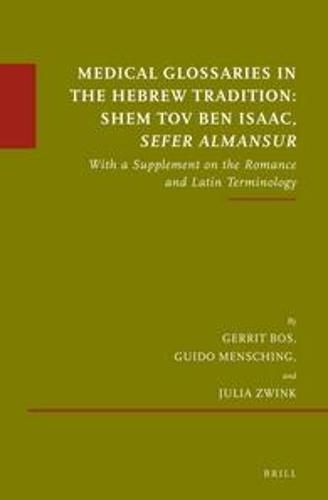Readings Newsletter
Become a Readings Member to make your shopping experience even easier.
Sign in or sign up for free!
You’re not far away from qualifying for FREE standard shipping within Australia
You’ve qualified for FREE standard shipping within Australia
The cart is loading…






The Sefer Almansur contains a pharmacopeia of about 250 medicinal ingredients with their Arabic names (in Hebrew characters), their Romance (Old Occitan) and occasionally Hebrew equivalents. The pharmacopeia, which describes the properties and therapeutical uses of simple drugs featured at the end of Book Three of the Sefer Almansur. This work was translated into Hebrew from the Arabic Kitab al-Mansuri (written by al-Razi) by Shem Tov ben Isaac of Tortosa, who worked in Marseille in the 13th century.
Gerrit Bos, Guido Mensching and Julia Zwink supply a critical edition of the Hebrew text, an English translation and an analysis of the Romance and Latin terminology in Hebrew transcription. The authors show the pharmaceutical terminological innovation of Hebrew and of the vernacular, and give us proof of the important role of medieval Jews in preserving and transferring medical knowledge.
$9.00 standard shipping within Australia
FREE standard shipping within Australia for orders over $100.00
Express & International shipping calculated at checkout
The Sefer Almansur contains a pharmacopeia of about 250 medicinal ingredients with their Arabic names (in Hebrew characters), their Romance (Old Occitan) and occasionally Hebrew equivalents. The pharmacopeia, which describes the properties and therapeutical uses of simple drugs featured at the end of Book Three of the Sefer Almansur. This work was translated into Hebrew from the Arabic Kitab al-Mansuri (written by al-Razi) by Shem Tov ben Isaac of Tortosa, who worked in Marseille in the 13th century.
Gerrit Bos, Guido Mensching and Julia Zwink supply a critical edition of the Hebrew text, an English translation and an analysis of the Romance and Latin terminology in Hebrew transcription. The authors show the pharmaceutical terminological innovation of Hebrew and of the vernacular, and give us proof of the important role of medieval Jews in preserving and transferring medical knowledge.